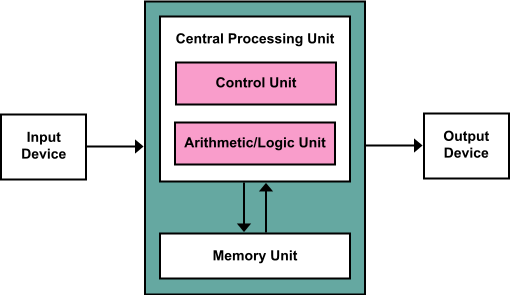Architecture of the central processing unit (CPU)
This is an important concept. You should fully understand this.
A central processing unit (CPU) is the electronic circuitry within a computer that carries out the instructions of a computer program by performing the basic arithmetic, logical, control and input/output (I/O) operations specified by the instructions. [1]
Major parts of a CPU[edit]
Below we see a simplified diagram describing the overall architecture of a CPU. You must be able to outline the architecture of the central processing unit (CPU) and the functions of the arithmetic logic unit (ALU) and the control unit (CU) and the registers within the CPU.
Please know and understand:
- Memory holds both data and instructions
- The arithmetic/logic gate unit is capable of performing arithmetic and logic operations on data
- A processor register is a quickly accessible location available to a digital processor's central processing unit (CPU). Registers usually consist of a small amount of fast storage, although some registers have specific hardware functions, and may be read-only or write-only[3]
- The control unit controls the flow of data within the CPU - (which is the Fetch-Execute cycle)
- Input arrives into a CPU via a bus
- Output exits the CPU via a bus
These videos are truly superb to help you understand parts of a CPU, and how they work.
Do you understand this topic?[edit]
- Describe the function of the ALU
- Describe the function of the control unit
- Describe the function of the program counter
- Describe the function of the clock
- Describe the function of an instruction
- Define instruction register
- What does a bus do?

